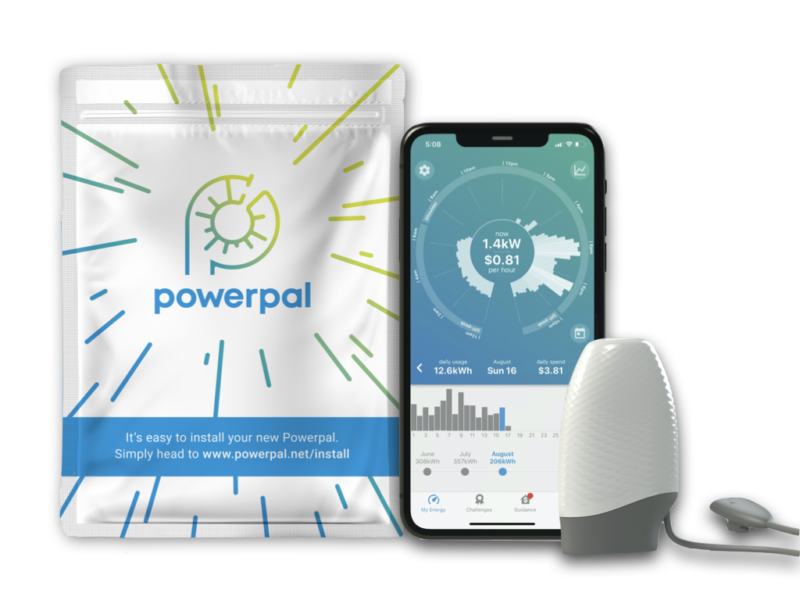Want to save money on your energy bills, but don’t know where to start? If so, then you’ve come to the right place!
These 10 suggestions are all easy to execute and won’t require you to make major changes to your home or business – it’s all about finding small ways to make big improvements to your energy usage – and bills!
1. Change your light bulbs!
An easy way to save money is by changing your light bulbs. If you have incandescent light bulbs, look into switching to energy-efficient LED (light-emitting diode) alternatives. LEDs are much more efficient and last a lot longer than halogen and incandescent globes. Utilising them can save you up to 80% of your lighting costs, which can make up to 10% of your total household energy expenditure according to energy.gov.au.
2. Use an Energy Monitor to save money on your energy bills
An energy monitor can show you exactly where your energy is going in real-time, help you adjust your habits and take control of your usage. Connecting a smart energy monitor to your home will allow you to track how much energy different appliances are using over time, giving you valuable data about when you should use them and when it’s more efficient (and more cost-effective) not to. Even something as seemingly simple as turning off lights can make a difference, and by optimising your usage patterns you can cut back on costs without sacrificing comfort or convenience.

Luckily, the Powerpal Energy Monitor is available for free to Victorians under the Victorian Energy Upgrades program (aka the VEU). Outside of Victoria, a Powerpal can be purchased for Australia for only $129. Users of Powerpal reduce their bills by an average of 15%.
3. Use standby power controllers
Standby power controllers can help you cut back on electricity usage and save money. By plugging all of your devices into a standby power controller, you can cut down on phantom energy usage. For example, if one of your devices is drawing power even when it’s off or inactive, unplug it from a wall outlet—you may not notice that it’s still using electricity, but it is.
4. Consider solar panels
Investing in solar panels for your home is one of those options you’ve probably heard a lot about – and for good reason. Houses with solar panels see bills that are 20% less, on average, than houses without solar panels. There are pros and cons, but if you can afford it, it’s worth considering if you live in an area that gets at least five hours of sunlight a day. Solar calculators like this are a great way to calculate your potential savings and whether it is suitable for you. Powerpal even offer a handy solar calculator inside the app, which crunches the numbers for you based on your recent usage.
5. Turn off lights when you leave the room
Leaving a light on in an empty room—or even just switching off lights when you leave a room for more than a few minutes— can add up to significant savings on your energy bills over time.
6. Invest in appliances with high Energy Star ratings
The Energy Rating Label system was launched in Australia around 30 years ago with the aim of arming Australian consumers with knowledge around the energy usage of their current (and future!) appliance. It’s important to look for energy-efficient appliances when you’re replacing your current appliances. Look at their Energy Star rating and keep in mind that while they will cost more initially, they’ll save you money over time. You can find out more about Energy Ratings here or by watching the video below.
7. Insulate your pipes
Insulating your pipes helps prevent heat loss, which means you can use less energy. In fact, you could save up to 10% off your heating bill each year by insulating exposed hot water and steam pipes in your home. As an added bonus, it’s also a good idea to check for any leaks that could be causing further heat loss; fixing them will likely pay for itself in lower energy bills.
8. Ditch the desktop computer
Desktop computers use more energy than laptops and tablets, meaning that if you’re trying to save money on your energy bills, you should consider ditching your computer for a tablet or laptop. The average desktop computer uses around 200 watts of power. The average laptop uses about 80 watts of power. If you used an old desktop at home 24 hours a day, it would cost you around $50 a month in electricity—$600 per year—just from using your computer! If you switched from a desktop to a laptop or tablet, chances are good that it would help you to save money.
9. Switch from gas and electric hot water systems to a heat pump
Heat pumps are 65% more efficient than traditional hot waters systems meaning you’ll not only save money on your electricity bills but you’ll be reducing your environmental impact. Heat pumps can also be connected to your solar system meaning you can potentially reduce your hot water bill to nothing.
10. Use cold water to wash your clothes.
One of the easiest ways to save money is to wash clothes in cold water. Washing with warm or hot water can use between 3 and 6 times more energy than cold! Hot water sets stains and leaves clothing feeling stiffer, whereas cold water will keep your clothes as soft as possible. Most of the time clothes come out just as clean as with hot or warm washes – the only difference you’ll see is your energy bill.
Summary
In summary, there are a number of great & easy ways to save money on your energy bills. From making sure you’re using the most efficient technology possible, to changing your (and your family’s) behaviour over the long term! Keep an eye on our blog as we continue to work for a more efficient energy future.
